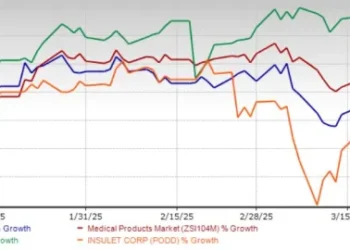Recent months have seen a steady exodus of senior leadership across the Department of Health and Human Services (DHHS), the Centers for Disease Control and Prevention (CDC), and the Food and Drug Administration (FDA)—the very agencies responsible for the nation’s most critical public health decisions.
While some departures are expected during any presidential administration, the scale and timing of these resignations—many occurring before or in anticipation of the 2024 election cycle—signal more than just routine turnover. They raise profound concerns about continuity, institutional knowledge, and the strategic direction of federal healthcare policy at a moment when long-term clarity is desperately needed.
The Leadership Void
High-profile exits, including those of CDC Director Rochelle Walensky, FDA Principal Deputy Commissioner Janet Woodcock, and DHHS Chief Science Officer David Kessler, have left policy gaps at the helm of America’s most influential health institutions.
With new and acting leaders stepping in during politically charged times, it becomes increasingly difficult to execute long-range policy planning or build on pandemic-era reforms. This revolving-door leadership dynamic not only erodes internal morale but also complicates coordination with states, healthcare systems, and international partners.
Why Continuity Matters
Healthcare policy isn’t written overnight—it’s shaped by years of interagency collaboration, stakeholder input, and regulatory finesse. Leaders at the top of DHHS, CDC, and FDA don’t just oversee day-to-day operations; they set priorities, navigate crises, and shepherd complex rulemaking processes that can take years to implement.
Consider initiatives like Medicare payment reform, opioid crisis management, or digital health integration. Each requires sustained vision and consistent leadership across election cycles. When senior officials leave midstream, key policies lose momentum, or worse—get scrapped and restarted under new leadership with different priorities.
Institutional Memory Is Fragile
Every agency has a culture, a rhythm, and a historical memory. When longtime leaders exit, that memory weakens. It becomes harder for agencies to learn from past mistakes, maintain continuity in enforcement actions, or ensure consistent interpretation of regulatory guidance.
This is particularly problematic for the FDA, where consistent oversight is vital for drug approval pipelines and ongoing safety monitoring. Similar challenges exist at the CDC, where public trust—already eroded during the pandemic—is further strained by inconsistent messaging and changing leadership faces.
A Precarious Time for Public Health
These departures come at a time when America is juggling multiple health priorities:
- Managing post-pandemic transitions and emergency preparedness
- Expanding access to behavioral health and substance use treatment
- Overhauling Medicaid and Medicare reimbursement systems
- Addressing rising obesity rates and the role of GLP-1 medications
- Navigating emerging technologies like telehealth and AI in diagnostics
Each of these requires not just federal coordination but strong, credible leadership capable of sustaining efforts beyond a single administration.
What This Means Going Forward
In the short term, leadership churn injects uncertainty into policymaking. Stakeholders—including hospitals, insurers, pharmaceutical companies, and state governments—may delay decisions or hedge on long-term investments if they sense policy instability at the federal level.
In the long term, the absence of strategic continuity could mean missed opportunities to institutionalize pandemic-era innovations, like digital health waivers and new models for community-based care.
Final Thoughts
Leadership transitions are inevitable in public service—but their timing and frequency matter. As DHHS, CDC, and FDA navigate these latest shakeups, the question isn’t just who will lead next, but how they will ensure continuity in policy and rebuild public trust.
For a nation still recovering from the trauma of COVID-19 and facing the mounting demands of a rapidly evolving healthcare landscape, the stakes couldn’t be higher.















